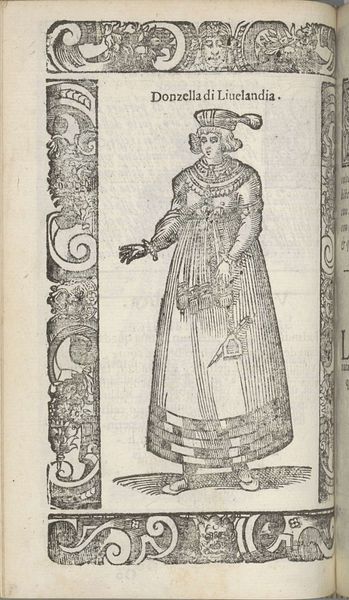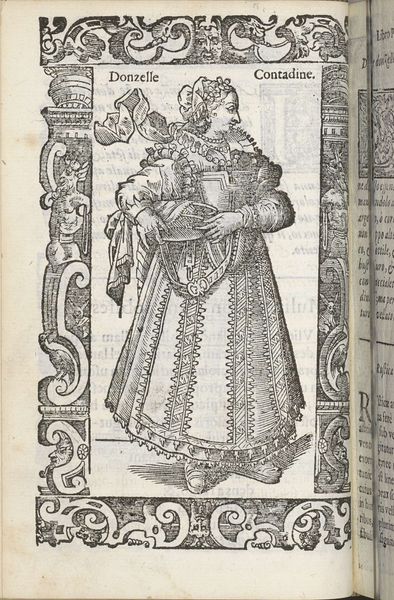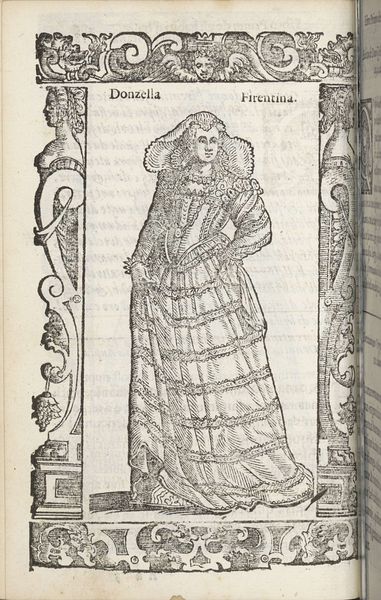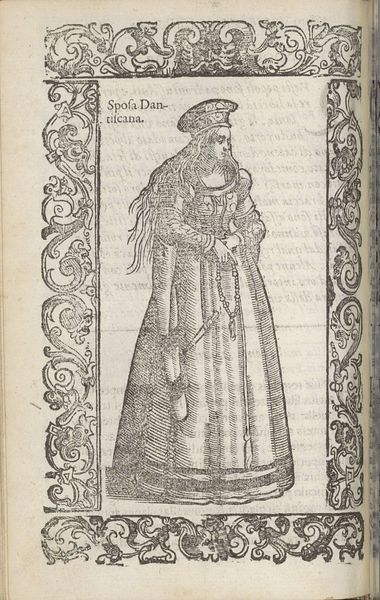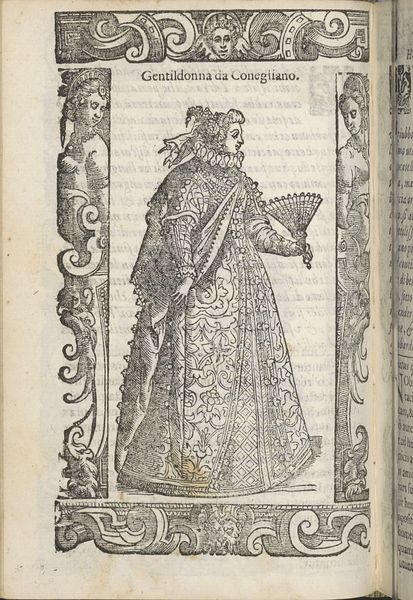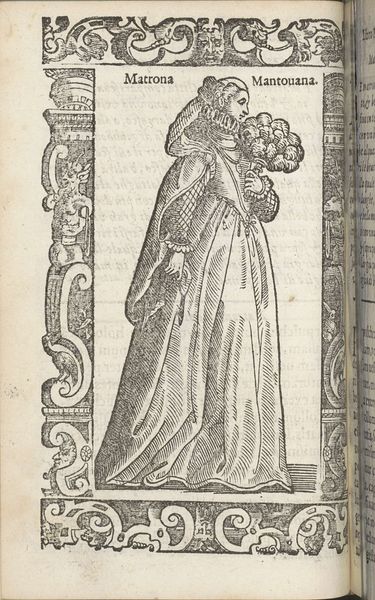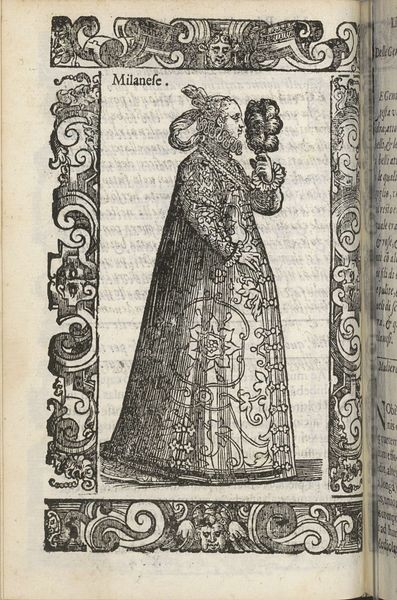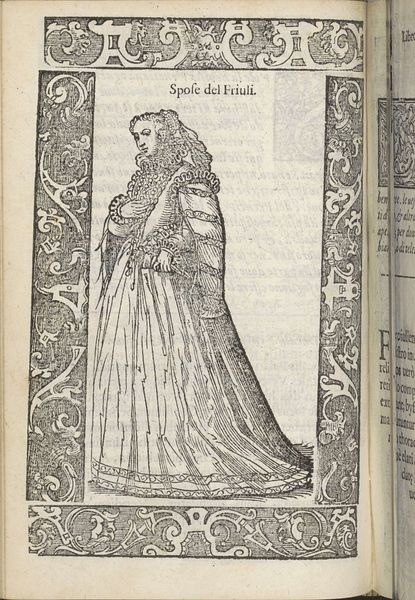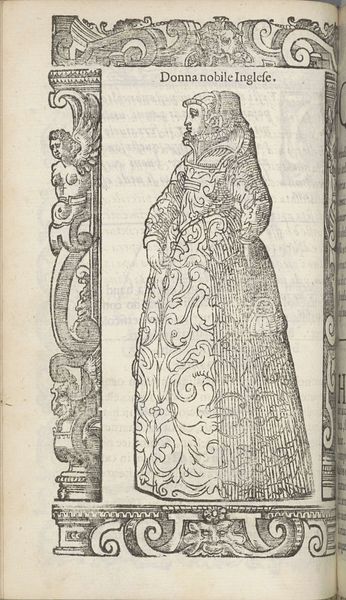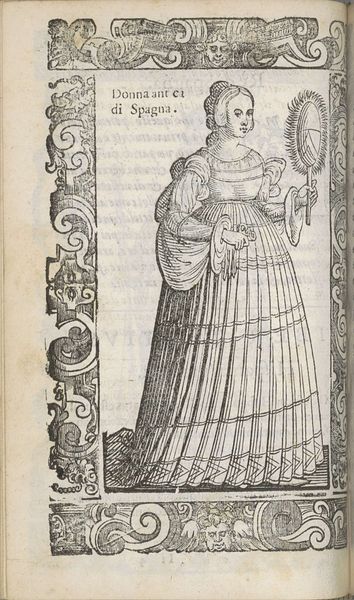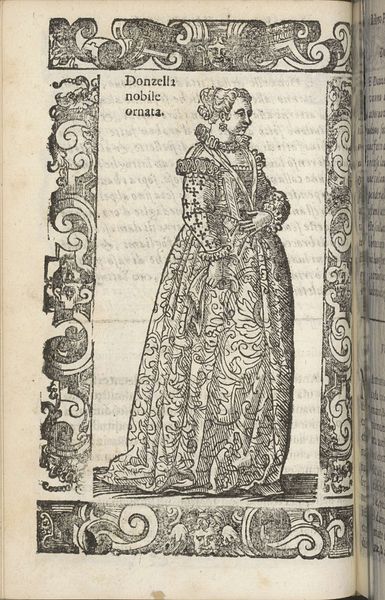
print, engraving
#
portrait
# print
#
figuration
#
italian-renaissance
#
engraving
Dimensions: height 167 mm, width 125 mm
Copyright: Rijks Museum: Open Domain
Curator: This intriguing print, “Donzella di Turino,” or “The Young Woman of Turin,” was created in 1598 by Christoph Krieger, during the Italian Renaissance. It’s an engraving. Editor: She looks remarkably self-possessed. Despite the somewhat rudimentary linework, the artist has captured a sense of serene dignity. The slight smirk gives a touch of irreverence. Curator: What's striking is how Krieger has captured this "Donzella" within the broader visual culture of the era. Think about the way images, particularly prints, functioned then. They were disseminating ideas, social ideals, and even fashion trends across geographical boundaries. The very existence of this print implies she held a position, whether through family status or something inherent about her personhood, that Krieger felt should be put on view. Editor: Right, her very presentation is a carefully constructed statement, a controlled projection of identity. It speaks to me of both privilege and the constraints placed upon women, even those with considerable social standing. What narratives are opened or closed by her fashionable presentation? Curator: Precisely. Let's examine her garb. It is, without doubt, very stylish. Yet, that stylishness, as you said, signals constraints, even while implying sophistication. The multiple layers, the cinched waist, all tell a story about expected behaviors and displays of wealth. I can't help thinking about how those choices limited bodily autonomy and agency. It highlights a fundamental contradiction: visible power gained only through subservience to the very patriarchal structures she subtly defies through a confident pose and a little flower. Editor: And notice the borders and how they contain her? She seems penned, catalogued...almost commodified as an object of desire or perhaps admiration, a collectible exemplar of idealized femininity available for consumption and display. Curator: An apt summation, really. This image makes us acutely aware of the social theater women had to navigate in the Italian Renaissance, a theater where clothing, demeanor, and representation could solidify or subvert their position within society. Editor: Absolutely. She provides a fascinating glimpse into the complexities of early modern identity and representation, offering space for nuanced reflection on agency, constraints, and the politics of image-making.
Comments
No comments
Be the first to comment and join the conversation on the ultimate creative platform.
